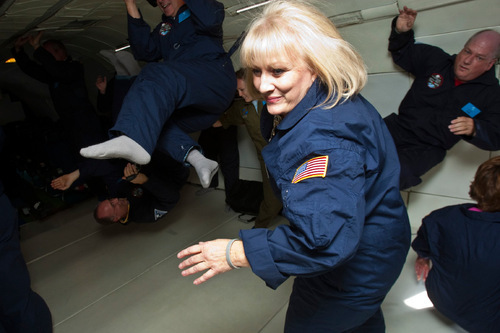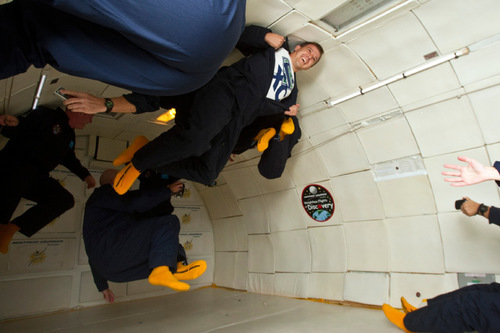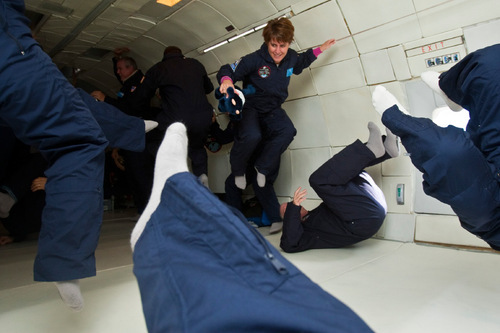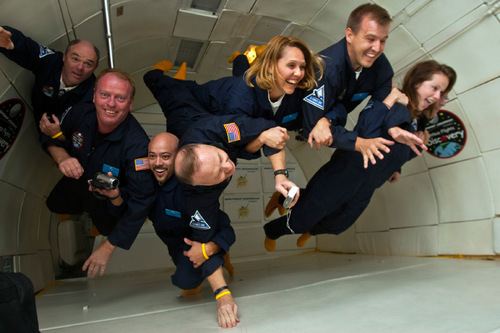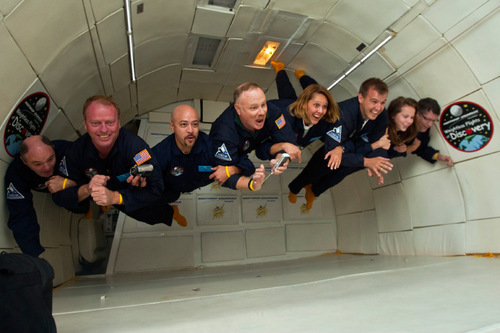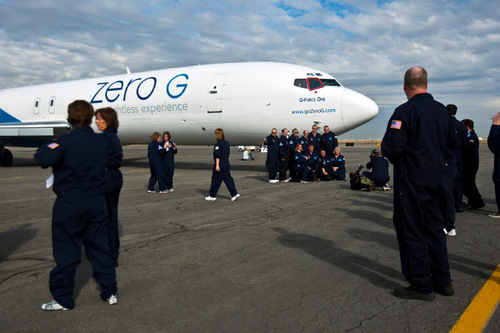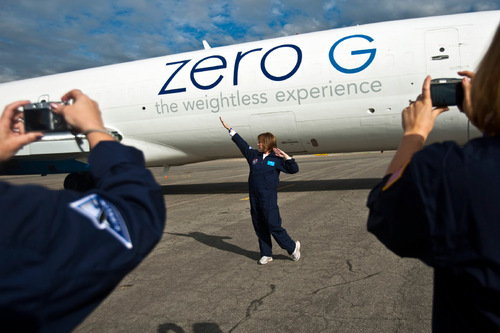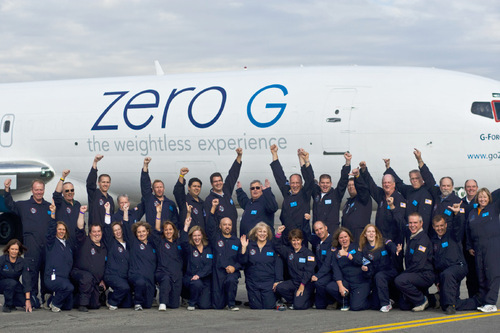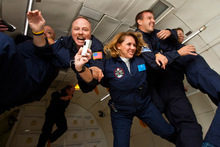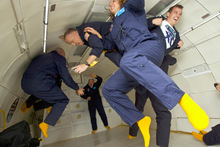This is an archived article that was published on sltrib.com in 2010, and information in the article may be outdated. It is provided only for personal research purposes and may not be reprinted.
When he was 6, Keith Quigley saw Neil Armstrong walk on the moon and decided he wanted to do it too.
On Monday — 41 years later — he finally got to feel some of what Armstrong must have felt, though he became a teacher instead of an astronaut.
Quigley, along with nearly 30 other teachers from Utah and nearby states, spent about two hours skyrocketing up and down in a specially modified airplane to experience weightlessness. The teachers performed experiments, flipped, floated and spun in a padded, chairless part of the cabin in hope of inspiring their students to become the nation's next scientists and engineers.
"It was fantastic. It was everything I thought it would be and more," said Quigley, a physics and astronomy teacher at Roy High School. "If I'm excited about it, the kids will be excited."
The Utah teachers joined more than 1,100 other educators nationwide who have participated in the Northrop Grumman Foundation Weightless Flights of Discovery program over the past five years. Monday marked the program's first visit to Utah. Teachers applied to participate.
Anthony Spehar, vice president in missile systems for Northrop Grumman, said the program's goal is to excite students about science and engineering.
"As an industry we're struggling to produce the scientists and engineers we need for our future," Spehar said. "What we find is you have to influence people early. If we can get people interested in math and science in junior high and have them take AP math and science courses in high school, we can produce the technical talent we need in this country."
If the teachers' giddiness Monday was any indication of how their students might feel, organizers can likely count the event as a success.
During the course of about two hours, the plane rose and fell more than a dozen times between an altitude of about 32,000 feet and 24,000 feet over a 100-mile-long stretch of airspace. The aircraft traveled in a path similar to that of a rollercoaster to create reduced gravity and zero gravity. The teachers lay on the floor as the aircraft climbed at 45 degree angles creating 1.8 times the force of gravity. Then they floated for as long as about 30 seconds at a time as the plane rolled off the top of each curve.
They experienced what it would feel like to be on the moon, on Mars and floating in space (and a few lost their breakfasts). In all, they got almost as much zero-gravity time as Alan Shepard, the first American in space.
"It was so incredible, so amazing," said Bonnie Bourgeous, an International Baccalaureate biology and environmental science teacher at Clearfield High. "That sense of having no gravity is the most incredible experience I've ever had."
Bourgeous, who went with her husband, Brent Bourgeous, a math teacher at Wahlquist Junior High in Ogden, took an EKG which she hooked to her inner elbows and wrist to measure her heart rate and the strength of the electrical current that drives the heart. She and her class hypothesized that her heart rate would decrease in zero gravity because it wouldn't have to work so hard to pump blood. She said her heart did beat less frequently in zero gravity, though it beat harder at certain points, possibly because of the excitement.
"Being able to take that back to my students ... you can't buy that kind of data for students," she said. Program cameramen filmed the teachers performing their various experiments to show to their students later.
Many of the teachers said their students begged to come along. Sydney Young, a science teacher at Early Light Academy charter school in South Jordan, did her best to accommodate their request by taping photos of her classes to the back of her jumpsuit.
"They think we're astronauts," Young said.
Young took a toy that releases colored drops of oil into water. As the plane climbed steeply, the drops came faster, in an almost constant stream. When the plane hit zero gravity, the drops stopped moving altogether.
"This is definitely something I can show my kids," Young said. "In any kind of physics class you talk about things that don't exist like a world with no friction or no gravity, and that's really hard to wrap your mind around. When we experience it, we can better understand it and show it to the kids."
She'll also show her students video of the larger experience — teachers giggling as they suddenly felt their bodies lift off the ground, catching floating Mentos in their mouths and playing "teacher toss," a game in which two teachers toss another teacher, rolled into a ball, back and forth in zero gravity.
"It was incredible," Young said. "I will never be the same. I don't think any of us will ever be the same."



